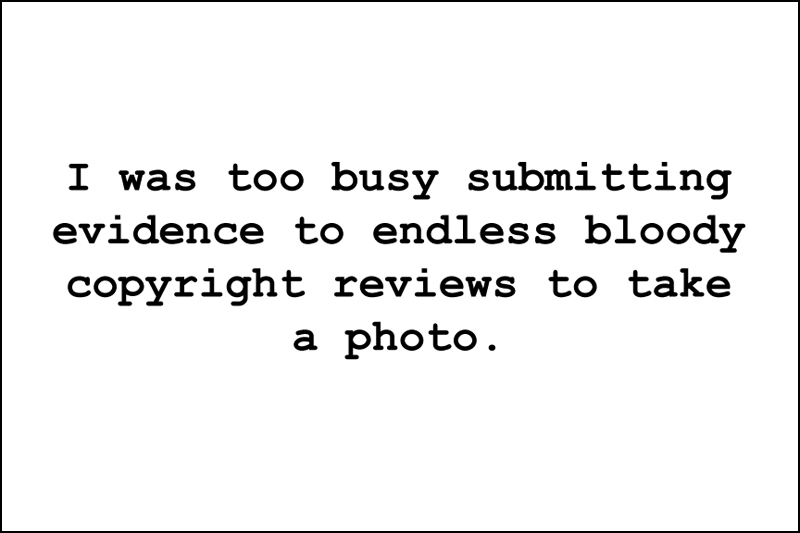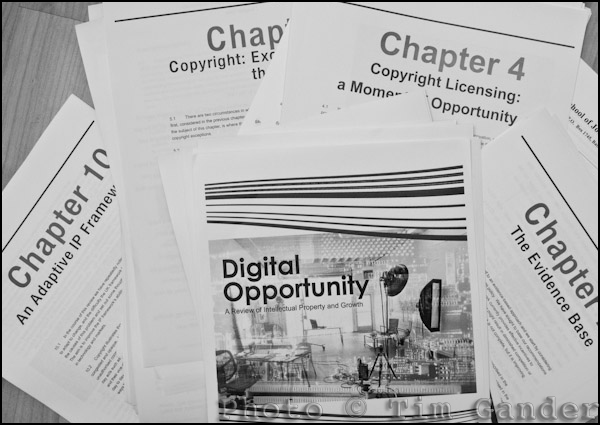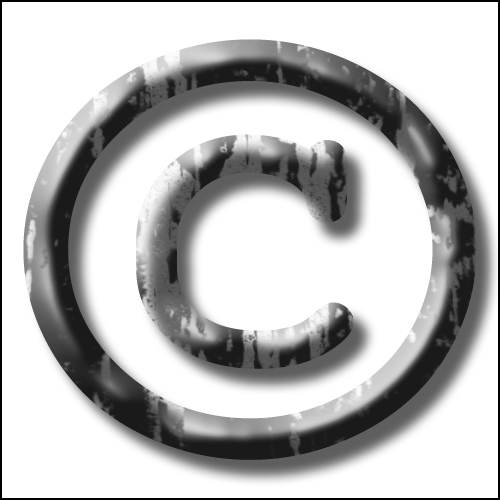There has been much a-do about the Enterprise Regulation Reform Act (ERRA) and I’ve written about it before and shall no doubt have to write about it again. Much to my irritation.
In response to the many millions of words written about it and an e-petition on the Number 10 website, which currently stands at almost 27,000 signatures, the Intellectual Property Office has issued a statement which it hopes will calm the fears of photographers.
The problem with the document is that writing the word “Fact” in bold lettering at the start of a sentence doesn’t make that sentence irrefutable. There are still too many variables, too many vague answers to specific points and the act has as yet no regulations applied to it, which is why so much that has been written can only guess at what the real purpose of the act will be.
Reading the statement, what kept jumping out for me was the idea that orphaned works could be licensed and licensed “at the going rate.” I’d very much like to know how a government-appointed agent will decide the “going rate” for any particular photo. How will they know whether or not consent for the proposed use would have been granted without the author having been contacted? How will they know what the rights holder would have charged for the use of that image if they were given the choice?
How will anyone not connected to the image or its author know if any people in the photo would be happy for their likeness to be used in any given context? Who will even know which country the image originated in? Or whether the original client for that photo is happy for others to use it? Many images (most of the ones I take for my living) are supplied on an exclusive basis.
I quote here a typical paragraph from the IPO’s response:
“Myth – anyone can use my photos without my permission
Fact – Anyone wishing to use a work as an orphan must first undertake a diligent
search for the rights-holder which is then verified with permission to use the work
granted by the Government appointed independent authorising body. If the work is
not genuinely orphan then the rights-holder should be found, if the search is not
properly diligent, no licence will be issued.”
Presumably though, if it is decided the search was diligent, but the rights-holder was still not found, the image can be paid for at an un-specified “going rate” and used with permission of the governing body. Therefore, without the rights-holder’s permission. That paragraph, like so many others in this document should read simply:
“Fact – anyone can use my photos without my permission
Fact – Maybe. There will be some kind of procedure as yet unspecified and you might lose control of your image, but don’t worry your silly little head about that.”
It will be interesting to know how on the flip-side of this, the rights-holder is supposed to discover their work has been used and then claim whatever money (or Green Shield stamps or bellybutton fluff) has been held in safe-keeping for them. Are creators expected to constantly check an ever-expanding register of works for use of their images? If the granting of licences is an exception rather than a rule, this might even be possible, but it’s still not ideal and still rides roughshod over the basic tenets of copyright.
IF the IPO had come straight out and said “this act will ONLY apply to works held in recognised historical archives” a lot of fears might have been assuaged, but they didn’t.
The IPO also makes no mention of any plans to strengthen moral rights – the right to be identified as the author of a work, the right not to have one’s work mis-attributed and in particular, the right not to have identifying data stripped from one’s images. Simply by re-enforcing the the creator’s right to have their identity kept with the work would be a start.
The problem with the IPO’s statement is it’s lack of clarity, either through insufficient understanding of their own subject, or because there is unseen industry pressure to keep things vague until the great reveal of the guidelines by which time it will be too late for photographers to properly and comprehensively defend their rights.
Given tight enough regulation, the ERRA could be a good thing for photographers by making it clear our works, even where their identifying data has been removed, are not orphans, but until the guidelines are published we have no idea of the intention of the legislation. By the time we do know, it’ll be too late to do anything about it. I have a terrible feeling we’re being inched towards a goal that was decided upon long before Hargreaves set up his review.





